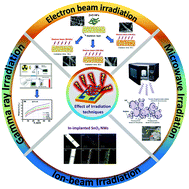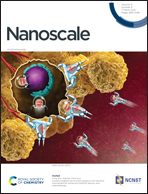Boosting the sensing properties of resistive-based gas sensors by irradiation techniques: a review
Abstract
The ongoing need to detect and monitor hazardous, volatile, and flammable gases has led to the use of gas sensors in several fields to improve safety and health issues. Conductometric type gas sensors, which have considerable advantages over other gas sensors, have thrived in numerous gas sensing fields. The ever-present key challenges and requirements of these sensors are to achieve excellent performance, including high sensitivity, good selectivity, low working temperature, and durability. Therefore, tremendous research effort has focused on improving these properties, and various state-of-the-art techniques have been reported. This review article discusses the recent advances and utilization of various irradiation techniques, including electron-beam, microwave, ion-beam, and gamma-ray irradiation, along with their investigation of the effects on the physicochemical properties of pre-synthesized nanomaterials, sensing performances, and related gas sensing mechanisms. A review of the progress on the effects of different irradiation techniques for boosting the sensing properties can contribute to the evolution of highly reliable sensors to assess the environment and health. For researchers, who work on gas sensors, this paper provides information on the current trends on the advances in the novel state-of-art of irradiated materials and their promising application in the sensitive detection of various toxic and VOCs.

- This article is part of the themed collection: Recent Review Articles


 Please wait while we load your content...
Please wait while we load your content...